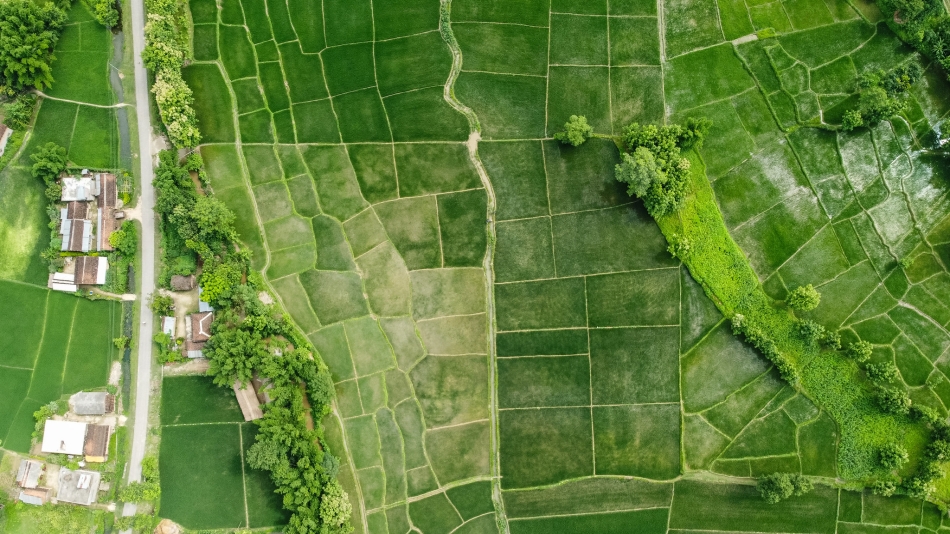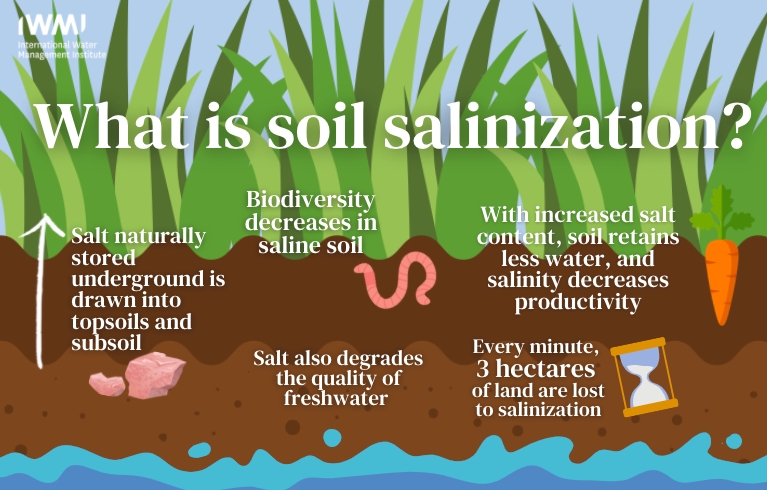By Isis Palay, Communications Consultant
As Leonardo Da Vinci once keenly observed, “We know more about the movement of celestial bodies than about the soil underfoot.”
Some 500 years later, we celebrate World Soil Day every December 5. It is a day created by the United Nations to raise awareness about soil degradation around the globe, and make clear the threat that unchecked soil degradation poses to ecosystems and people.

Why is soil quality important?
Early on in life, we grow to understand that soil is what allows our food systems to thrive. Indeed, many key technological advances in agriculture have been aimed at improving the quality and contents of our soils in order to increase crop productivity. But the fact that our soils also provide vital services like flood protection and carbon capture is often overlooked.
World Soil Day allows organizations like IWMI to promote sustainable and effective soil management practices that also ensure ecosystem health. We work to strengthen the resilience of food systems in more than 30 countries, and our research emphasizes how improved water management practices can benefit soil health and preserve soil quality.
Above all, World Soil Day provides a platform to recognize the importance of soil as a crucial component of our food, land, and water systems. This year’s theme — soil salinization — calls attention to an urgent issue threatening agricultural production, food security, and sustainability in arid and semi-arid regions of the world.
What is soil salinization?
As the name suggests, soil salinization involves the presence of salt in soils. The process can occur when salt stored underground is drawn upward to soil nearer to the surface by the movement of water; when land is irrigated with saline water; or when large amounts of fertilizer are applied.
While salt is naturally present in soils and water, drought and human activities (such as improper irrigation practices) can increase the quantity of salts contained in soils, which are made less productive as a result. When soils are excessively saline, their ability to retain water and nourish crops deteriorates.
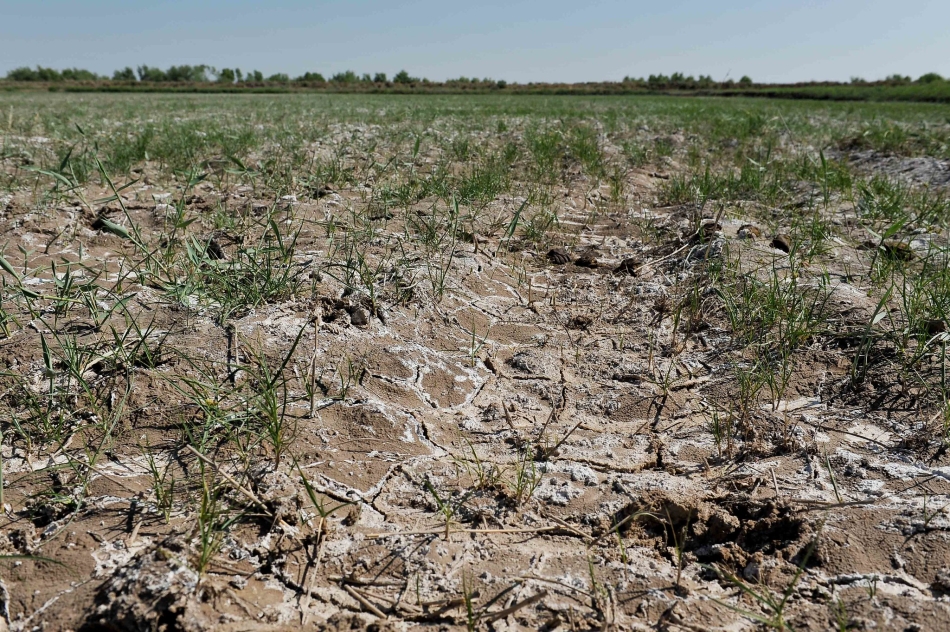
Soil salinization creates other challenges as well. Insects and animals cannot survive in overtly salty soils, for example, posing a significant threat to biodiversity. This is one of the many reasons IWMI researchers are working to slow salinization by improving land management and irrigation practices.
What constitutes healthy soil?
A healthy soil is a living system, which functions as a whole to sustain plant and animal productivity and enhance water and air quality. When in good health, soils host billions of organisms and are able to retain water effectively.
Since crops need seventeen nutrients and minerals to grow, hydrated soil — full of not only minerals but also decomposing organic material, bacteria, fungi, protozoa, algae, and insects — is vital for their growth. Considered as a non-renewable resource because it is slow to form, healthy soil serves a wide range of productive purposes, including:
- Enabling plant growth and sustaining fauna;
- Producing food and fiber;
- Filtering water and slowing erosion;
- Maintaining air quality and capturing carbon; and
- Increasing our resilience to natural disasters such as storms, bushfires, floods, and droughts.
- Did you know that one teaspoon of healthy soil contains between 100 million and 1 billion individual bacteria?
- 95% of our food was grown in soil, or fed with crops grown in soil.
- Soil is comprised of 45% minerals, 25% water, 5% organic matter, and 25% air.
- Healthy soil will be crucial to feeding 9 billion people by 2050.
Where are soils the most damaged?
As indicated in the map below, the areas most damaged by salinization due to irrigation are spread across Asia and the Americas.
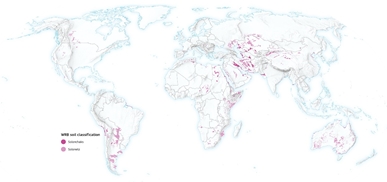
What is IWMI doing to keep soils healthy?
Some IWMI projects focus on improving drought management and limiting water overexploitation, which in itself prevents soil salinization. The MENAdrought project, for example, aims to develop map-based drought monitoring systems in Jordan, Lebanon, and Morocco, where soil salinization is accelerating. With satellite data sets — which detail soil moisture and evapotranspiration — water can be managed more efficiently both before and after a drought. This in turn helps preclude the loss of soil quality and helps strengthen the resilience of food systems in the Middle East and North Africa.
In Iran, meanwhile, IWMI worked to improve soil health, given that subsurface drainage, seepage from unlined canals, poor irrigation, inadequate water management, and other factors result in annual losses of US$1 billion across the country due to salinity. Taking socio-economic factors into account, IWMI researchers put forth potential adaptive measures for improving soil health and limiting the spread of salinity, including precision land leveling and zero tillage.
And in Uzbekistan, IWMI has found one restoration strategy to be particularly successful. The secret? Liquorice. After mapping salinity in the country’s Karakalpastan region, IWMI researchers realized that saline land was mostly irrigated land. After a successful four-year trial, IWMI experts found that liquorice could be both an economically- and environmentally-viable solution for tackling soil salinity. It not only provides animal fodder, but also can be sold for a profit on a three- to four-year cycle, all while restoring soil health by lowering soil compactionthe water table and increasing porosity of the soil allowing the salt that has accumulated to be flushed out of the profile. The restoration of the soil is so effective that farmers can return to growing wheat and cotton on what was once abandoned lands due to salinization.
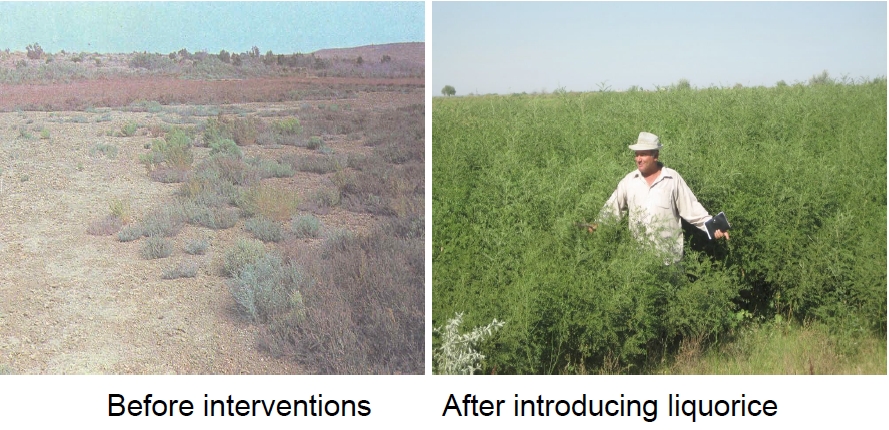
From Jordan, Lebanon, and Morocco to Iran, Uzbekistan, and beyond, IWMI and partners will continue to drive the advancement of research, tools, and technologies to tackle soil salinization in the years and decades ahead. This World Soil Day — and every day — let’s remember that while its importance is too often overlooked, healthy soil remains a foundational component of productive and sustainable food, land, and water systems.
Visit our website to read more on our projects related to soil health.
